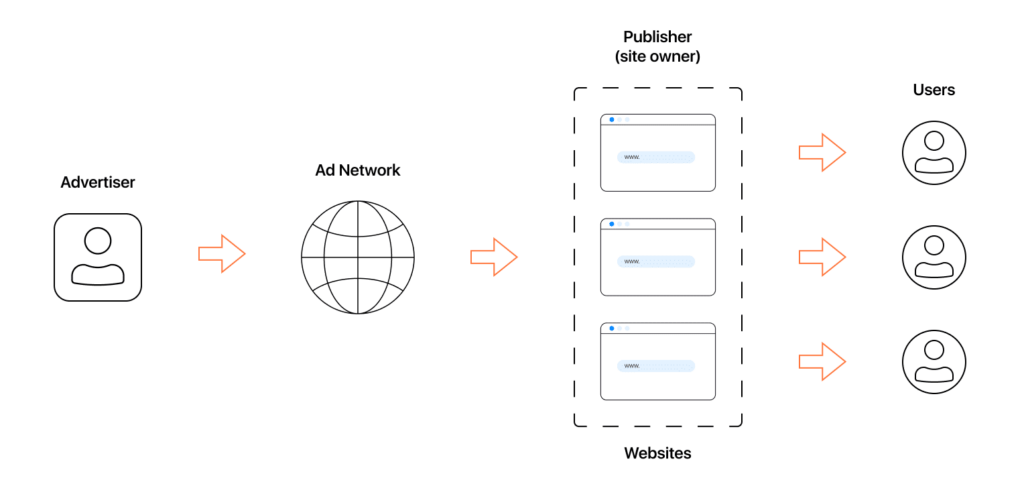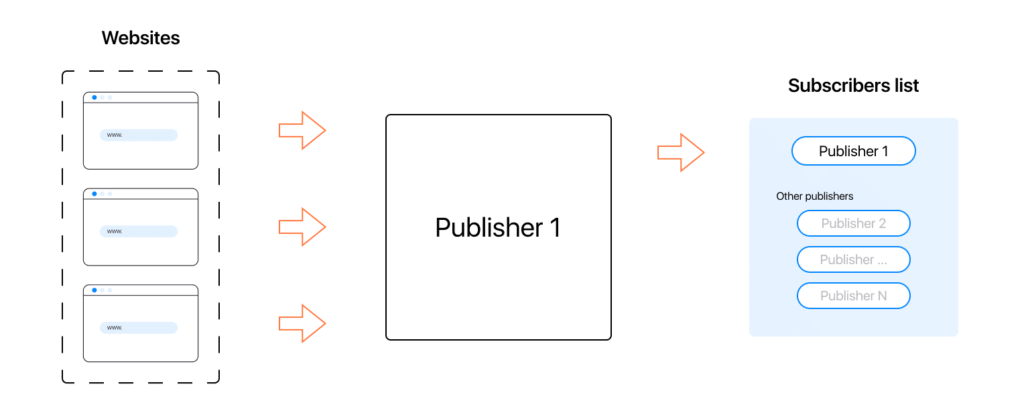Self-serve ad networks have emerged as a game-changer, particularly for affiliate marketers looking to streamline their advertising efforts. But what exactly does the term “self-serve ad network” mean? These platforms empower advertisers to take full control of their ad campaigns, from initiation to optimization, without the need for constant interaction with the network’s representatives.
Understanding the self-serve ad network meaning reveals its core benefit: providing a model that not only simplifies the ad management process but also offers flexibility and immediate control over campaigns. This makes it a favored choice among marketers who value autonomy and efficiency.
In the dynamic realm of affiliate marketing, ad networks serve as pivotal intermediaries connecting advertisers and publishers. These platforms aggregate ad inventories from multiple sources, offering a seamless way for advertisers to reach their target audiences across various publishers with a single campaign setup. On the flip side, they provide publishers with an opportunity to monetize their traffic efficiently.
Self-serve ad networks examples: RichAds, Push.House, TacoLoco, ClickAdu, Kadam, Traffic Nomads, Dao.ad, Adsterra, MyBid and RollerAds.
Self-serve ad networks are designed around the principle of giving control back to the advertiser. This is manifested in several ways:
Self-serve ad networks epitomize the evolution of digital advertising by empowering users with direct control over their ad campaigns. Advertisers can initiate, manage, and optimize their campaigns autonomously without the need for direct interaction with the ad network’s sales team. This autonomy is facilitated by user-friendly platforms equipped with intuitive tools and features that make campaign management straightforward, even for those with minimal technical know-how.

Subscribers lists are the largest traffic source in any ad platform. Each list can include several publishers. And accordingly, each publisher can have either one site or multiple ones.

Subscribers lists are the largest traffic source in any ad platform. Each list can include several publishers. And accordingly, each publisher can have either one site or multiple ones.
Networks offer full service for creating campaigns, not limited to only the collection of subscriber databases. These are multiple targeting options, subscribers lists prepared for particular verticals, optimization tools and other perks.
Main benefits:
Joining a self-serve ad network is more than just accessing a broad spectrum of advertising options; it’s about leveraging a comprehensive service ecosystem that supports every stage of campaign creation and management. These networks provide not only vast inventories and subscriber lists tailored to specific verticals but also tools for traffic verification to ensure quality, targeted settings for precise audience engagement, and optimization features to continually enhance campaign effectiveness.
Choosing the right self-serve ad network involves understanding the specific needs of your campaigns, including the types of ads offered, the volume and quality of traffic, the robustness of fraud prevention measures, and the level of support and optimization features available. By carefully evaluating these aspects, advertisers can select a network that not only meets their immediate needs but also supports their long-term marketing goals, driving profitability and growth in the competitive landscape of affiliate marketing.
Self-serve ad networks have emerged as a game-changer, particularly for affiliate marketers looking to streamline their advertising efforts. But what exactly does the term “self-serve ad network” mean? These platforms empower advertisers to take full control of their ad campaigns, from initiation to optimization, without the need for constant interaction with the network’s representatives.
Understanding the self-serve ad network meaning reveals its core benefit: providing a model that not only simplifies the ad management process but also offers flexibility and immediate control over campaigns. This makes it a favored choice among marketers who value autonomy and efficiency.
In the dynamic realm of affiliate marketing, ad networks serve as pivotal intermediaries connecting advertisers and publishers. These platforms aggregate ad inventories from multiple sources, offering a seamless way for advertisers to reach their target audiences across various publishers with a single campaign setup. On the flip side, they provide publishers with an opportunity to monetize their traffic efficiently.
Self-serve ad networks examples: RichAds, Push.House, TacoLoco, ClickAdu, Kadam, Traffic Nomads, Dao.ad, Adsterra, MyBid and RollerAds.
Self-serve ad networks are designed around the principle of giving control back to the advertiser. This is manifested in several ways:
Self-serve ad networks epitomize the evolution of digital advertising by empowering users with direct control over their ad campaigns. Advertisers can initiate, manage, and optimize their campaigns autonomously without the need for direct interaction with the ad network’s sales team. This autonomy is facilitated by user-friendly platforms equipped with intuitive tools and features that make campaign management straightforward, even for those with minimal technical know-how.

Subscribers lists are the largest traffic source in any ad platform. Each list can include several publishers. And accordingly, each publisher can have either one site or multiple ones.

Subscribers lists are the largest traffic source in any ad platform. Each list can include several publishers. And accordingly, each publisher can have either one site or multiple ones.
Networks offer full service for creating campaigns, not limited to only the collection of subscriber databases. These are multiple targeting options, subscribers lists prepared for particular verticals, optimization tools and other perks.
Main benefits:
Joining a self-serve ad network is more than just accessing a broad spectrum of advertising options; it’s about leveraging a comprehensive service ecosystem that supports every stage of campaign creation and management. These networks provide not only vast inventories and subscriber lists tailored to specific verticals but also tools for traffic verification to ensure quality, targeted settings for precise audience engagement, and optimization features to continually enhance campaign effectiveness.
Choosing the right self-serve ad network involves understanding the specific needs of your campaigns, including the types of ads offered, the volume and quality of traffic, the robustness of fraud prevention measures, and the level of support and optimization features available. By carefully evaluating these aspects, advertisers can select a network that not only meets their immediate needs but also supports their long-term marketing goals, driving profitability and growth in the competitive landscape of affiliate marketing.